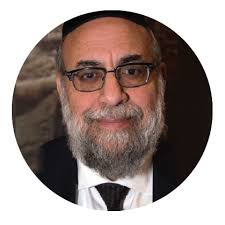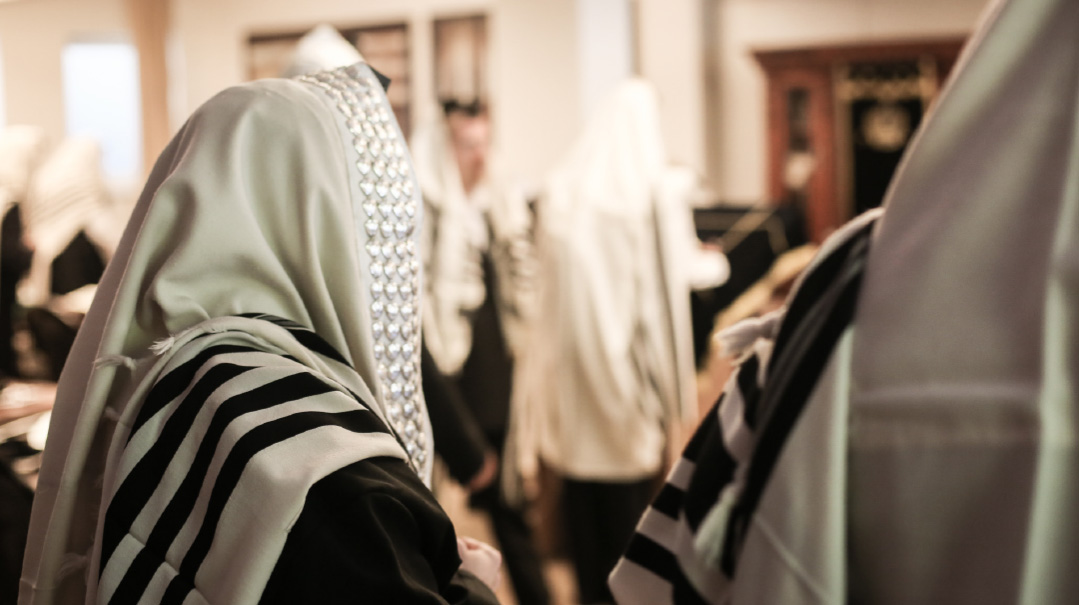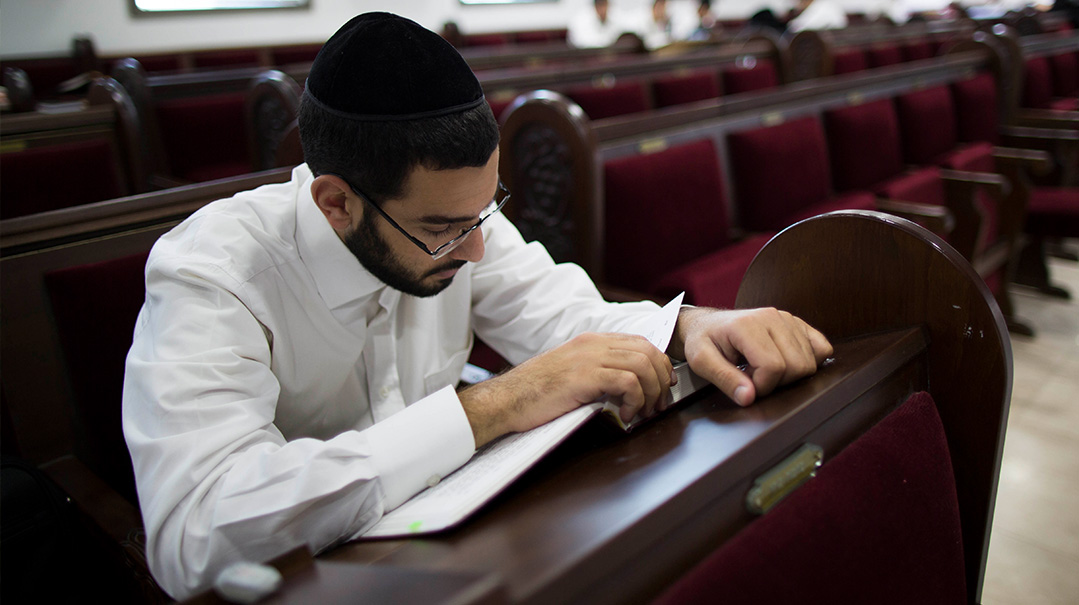From Darkness to Light

Sinas chinam is still among us and is holding back the final Geulah, just as it brought about the Churban itself
IT
has been both humbling and a bit stressful when people have approached me over the last few months asking why I haven’t written any articles in quite a while. Truthfully, it wasn’t a bout of writer’s block, but rather something much more difficult. The topic that I want to, or rather need to write about, is challenging and distressing. Challenging in that it is very difficult to be perceived as being mekatreig on Yidden, and even more so, distressing in that the message never seems to resonate with those who need it the most. But the words I’m writing come straight from my heart, and with Hashem’s help, will enter into the heart of at least one of the column’s readers.
While I don’t have any more knowledge of Heaven’s ways than the next guy, prior to the Three Weeks, deep down I thought we were finally here. After close to almost 2,000 years of suffering, wandering, and the fulfillment of every word found in the Tochachah, galus was finally coming to an end.
A careful study of the Mishnah at the end of Maseches Sotah describing the events preceding Mashiach’s arrival seems to read like a report of current events. We’ve suffered incomprehensible tragedies, like horrific car accidents and out-of-control buses; people without any political following are rising to top leadership positions; issues that have not surfaced since the founding of the State of Israel are now being debated; and the chinuch of our children here in the US, the medinah of chesed, is being called into question.
The past few months have brought so much pain to virtually every community that makes up the magical tapestry of Klal Yisrael. We’ve suffered the loss of the Sar HaTorah, Rav Chaim Kanievsky ztz”l; the Gaavad, Rav Yitzchok Tovia Weiss ztz”l; the rosh yeshivah of Yeshivat Porat Yosef, Rav Shalom Cohen ztz”l; and Rav Uri Zohar ztz”l. Klal Yisrael lost pillars of tzedakah and chesed with the passing of Reb Benny Fischoff z”l, Reb Yaakov Rajchenbach z”l, Reb Yankie Meyer z”l, and Reb Zecharia Wallerstein z”l, among others.
All the signs are here. The destructive war in the Ukraine has brought more Yidden to Eretz Yisrael in the last few months than in all the years since the Six Day War. Anti-Semitism and the rise of crime, along with the growing woke culture, are causing many Yidden to move from the medinah shel chesed to the medinah shel kedushah. And all this is happening in seemingly the most natural order of events, without a single shot being fired, exactly as foretold by Chazal.
I wondered if this would be our last time observing the Three Weeks as a period of mourning. I wondered if this was what Rav Chaim Kanievsky had meant when he asked me on my last visit to him, just 11 days before his petirah, “Why are you going back to America? You will be missing everything.” After so many painful and bloody years, had our time finally come?
But the Three Weeks passed with no signs of Mashiach, and disappointment set in.
We all know that what holds back the Geulah is sinas chinam. The Beis Hamikdash was destroyed because of sinas chinam, so if it has not yet been rebuilt, the logical conclusion is that we have not yet eradicated the root cause of its destruction.
But how is that possible? It just doesn’t make any sense. How can a nation that counts organizations like Hatzalah, Bikur Cholim, Ohel, Chai Lifeline, Bonei Olam, Ohel Sarala, Misaskim, Chaveirim, Shomrim, etc., in its ranks be accused of sinas chinam? It seems impossible to comprehend on any level, maybe even libelous.
It’s true that we still have a long way to go. As long as there are Yidden (albeit a very small, misguided minority with lofty intentions) who feel it’s okay to call other Yidden “Nazis”; who can throw rocks at women and children who happen to be sitting on a bus that passes a street they decided should be the front line of protest against whomever and whatever; Yidden who can enter into a rival faction’s beis medrash on Shabbos Kodesh with a mob-like frenzy and intimidate other Yidden who just happen to be in their orbit; Yidden who hide behind others and prey upon the financial plights of other Yidden, forcing them into foreclosure or collecting exorbitantly high interest fees on their loans; then we haven’t yet reached where we are supposed to be.
Still, I’m struggling with this. We are rachmanim bnei rachmanim, and the actions mentioned above represent only a small minority. If the time for Mashiach’s arrival has come, as so many signs seem to indicate, can the Geulah be held back from us because of them?
Then Succos was almost upon us, and like so many others, we made plans to spend Yom Tov in Eretz Yisrael. After almost two years of Covid restrictions, entry into the Holy Land was now freely permitted, and it seemed like more people than ever before were going. Again, I thought I understood. The Ribbono shel Olam is bringing the Geulah, and He is orchestrating that as many Yidden as possible be in Eretz Yisrael when it happens, I thought.
I felt encouraged and excited, especially because as a post-shemittah year, in the Beis Hamikdash’s time we would have fulfilled the mitzvah of Hakhel, and there is an often-quoted Zohar that states that the Geulah will come in the year of Hakhel. And Chazal teach us that on Motzaei Sheviis, right after shemittah, Mashiach ben Dovid will arrive.
But then Yom Tov ended, the overseas guests returned home, and still the Geulah did not come. Obviously, we are still suffering from the plague of sinas chinam and chamas haMelech lo shachachah.
The Ponevezher Rav ztz”l once commented that “the Dor Hachurban left us with two legacies. One is the Kosel. The other is sinas chinam.”
Sinas chinam is still among us and is holding back the final Geulah, just as it brought about the Churban itself. The Alter of Kelm once explained this with a parable. Passerby heard a person shouting, “Help, help, my father is dying!” But then, to their astonishment, they saw the son who was yelling agitatedly choking his father with his own hands!
“Are you crazy?” they yelled at him. “If you want your father to live, why are you choking him?”
The nimshal, the Alter explained, is that while we mourn over the Beis Hamikdash, if we have not let go of the actions that caused its destruction, we prevent its rebuilding.
Sinas chinam and machlokes are not new, modern-day issues. The Shevet Mussar once commented that the mahn fell every day in the desert, including the day that the Jews sinned with the Cheit Ha’eigel. But the day that Korach incited a machlokes, the mahn didn’t fall, because machlokes is even worse than avodah zarah.
I once heard from Rav Aharon Leib Steinman ztz”l that the world thinks that in the Chofetz Chaim’s days, Radin must have been a place of peace and truth. But that’s a mistake, the Rosh Yeshivah explained. People don’t know what kind of machlokes and fighting there was then.
There is a famous story of a person who wanted to report his friend to the authorities, and the Chofetz Chaim ran after him the entire way to try to stop him. The popular version of the story posits that the Chofetz Chaim was successful. But, Rav Steinman clarified, “the truth is that it did not work, because there is no remedy for machlokes. Not even the Chofetz Chaim himself was able to stop it.”
There is a story told regarding the great Zutchke Rebbe ztz”l and his tzavaah, in which he stipulated that while he was leaving his post to his sons, if it would lead to any machlokes at all, he would prefer the dynasty end with him. He stated he “would rather be the end of that the glorious link stretching back to the great tzaddikim of Nadvorna and Premishlan, than the start of any discord.” What an incredible lesson.
We know we must be guilty of sinas chinam if the Beis Hamikdash has not yet been rebuilt, but a panoramic look at the empire of chesed we have created on a communal level makes it hard to fathom. How do we resolve this seeming contradiction?
Every child can retell the story in Maseches Gittin about the incident that triggered the Churban — the story of Kamtza and Bar Kamtza. I’ve always been troubled by this Gemara, wondering how it could be that just one disinvited guest who was shown the door caused the destruction of the Beis Hamikdash. Were there no more serious infractions of sinas chinam that that? And conversely, we can assume the Jews of that era also boasted a rich communal life and had a chesed infrastructure in place. Wasn’t that a redeeming factor?
Contemplating this has led to me wonder if the incident with Kamtza and Bar Kamtza was truly an isolated story, yet it still brought the Churban! Maybe sinas chinam is not necessarily only a “communal problem”; surely our private and personal interactions as individuals are also taken very seriously. As children of the Avos and Imahos, maybe Hashem demands more of us. And if we don’t measure up in our interactions with others on the individual level, then despite all the organizations that exist, we may not be worthy of the Geulah.
One morning of Chol Hamoed, I davened neitz in the Gra shul in Shaarei Chesed, where I met an acquaintance. He came over to me, looking visibly upset, and said, “Just because someone is wealthy and gives a lot of tzedakah, and is highly recognized for all his charitable activities, doesn’t make him a mensch.”
Leaving me no opportunity to respond, he quickly elaborated. He’d been invited by a friend of his, let’s call him Reuven, to join him at a private, very upscale Simchas Beis Hashoeivah held at one of the hotels in Yerushalayim the day before. It was to be an evening of entertainment, great food, and drinks, and admission was by invitation only. Reuven, who was on the guest list, invited my acquaintance, whom we’ll call Shimon, to come along as well.
When they arrived, the host opened the door of the suite and told Shimon that the party was by invitation only. He then invited Reuven in and asked Shimon to leave. Reuven turned to him and apologized. “I’m sorry, I thought I could bring a friend along,” he said. “I’ll see you tomorrow.” And with that he entered the suite and closed the door behind him, leaving Shimon on the other side.
Now, the next morning, when I met Shimon, he shared with me how hurt and embarrassed he had felt. He said he was so disturbed, that he’d been up all night, and was looking to me for some confirmation that this behavior was totally unacceptable.
I immediately thought of the story of Kamtza and Bar Kamtza.
It’s entirely possible that a private encounter between two people, where one Yid was so indifferent to another Jew’s feelings, in the middle of simchas Yom Tov, in the holy city of Yerushalayim, has the ability to put the brakes on the journey to the Geulah.
My thoughts are that just maybe we are on track in our caring and doing for others in the public sphere, where we exhibit such incredible ahavas chinam. However, perhaps it’s in the interpersonal relationships, between two Yidden, either publicly or privately, where we still need work. Just maybe, in this area, even one “Kamtza” type encounter can set the clock back another month, another year, or chas v’shalom, even another shemittah cycle.
A few years ago, I had a shidduch idea for an older girl that I thought would be very appropriate. I mentioned the idea to the boy’s mother, who said she would look into it right away. Then she called me back and told me they wouldn’t be proceeding with the shidduch. Personally, I thought the families were a good fit, so I asked her what the problem was. After some prodding, she told me that, “someone in my family said it’s not a good fit for us.” I was surprised, but I saw her mind was made up and so I let it go.
Almost three years later, the girl was still single. Her mother reached out to me, and in a broken voice, asked if I had any ideas for her daughter, who was in so much pain. Then she said, “Rabbi Ginzberg, I know that you once had an idea for her, and I know that the boy is still single. Please try your idea again.”
Remembering the conversation with the boy’s mother, I wasn’t optimistic, but I didn’t have the heart to turn her down. I had heard that by now the boy was accepting ideas on his own, so this time I called him directly. A few days later, the boy called me back, and said that his mother had nixed the idea three years earlier because she had called another mechuteneste of hers, who’d said it wasn’t a good fit for them. The boy then asked me if I could speak to the mechuteneste directly and ask why she thought it wasn’t a good idea.
When I called her, she hesitated, then said she felt terrible that the shidduch had never gotten off the ground because of what she’d said. She explained that she had had an uncomfortable encounter with the girl’s mother many years back when their children were in the same class, and she still felt awkward around her. The idea of being a co-mechutan with this woman had made her feel uneasy and had led her to say what she did. But she felt awful when she understood that her information alone had stopped the shidduch, and was now very forthcoming in praise of the girl’s family.
Today the couple is married.
A perfect happy ending? Actually, not really.
A Jewish girl suffered three years of incredible pain and shed countless tears, all because another woman didn’t understand the impact of her words. And she isn’t the only one. How many shidduchim have not happened because of a needless word or phrase. How many instances of machlokes in our families and communities have been sparked all because of a few thoughtless words. A simple negative statement to a mispallel in shul, or a put-down while out for coffee with friends may be forgotten by the participants just a few minutes later, but cause an earthquake in Shamayim.
A few days ago, I attended a large chasunah that took place on a cold and rainy night. The parking lot was completely full and the parking attendants were working overtime in the heavy rain. One of the guests was an incredibly dedicated Yid, who responds to as many Hatzalah calls as he can. He arrived late to the wedding, on the heels of a call where he’d assisted in saving the life of a choking infant, and parked his car right at the entrance. When other guests began to exit the hall and called for their cars to be brought to them, this car’s position meant that the attendants couldn’t retrieve even one car as a result.
Dozens of people, including women and children, were forced to wait outside in the cold rain until this driver was located. It took almost half an hour until he was found, and then he came outside and drove off without even an apology. Standing there, I overheard all the negative comments by those inconvenienced, much of it said in anger. The words “chillul Hashem” featured prominently.
I have no doubt that by the next morning, no one remembered this incident, not the fellow with the car, not the people trying to leave, and not even the parking attendants. However, I think it’s safe to assume that in Shamayim it wasn’t forgotten.
We don’t have the capacity to understand the impact made in Shamayim when a Yid saves another person’s life. Chazal tell us it’s like he saved the entire world. Is it even possible for anyone to understand what the sechar is for saving the whole world? We also don’t have the capacity to understand what the ramifications are when a Yid does something (even without any malicious intent) that causes other Yidden to express the words “chillul Hashem” as a result of his actions. All we do know is that there are effects. They may not be in the realm of Kamtza and Bar Kamtza, but there are ramifications nevertheless.
This past Tishah B’av, I heard a painful interpretation for a tefillah we say several times during the week. “Acheinu kol Beis Yisrael hanesunim batzara u’vashivya ha’omdim bein bayam u’bein bayabasha.” The interpretation I heard is that the only time we can get along is when we are b’tzarah, in distress, like we accept everyone into the bikur cholim room in a hospital. Or, alternatively, when we are on vacation, bein bayam u’bein bayabasha, we tend to befriend whichever Jews we meet. But these are the only times we act like acheinu Beis Yisrael. How painful of an interpretation is that?
Chanukah is approaching, with its message of “Ner Ish U’baiso.” The mitzvah of hadlakas ner Chanukah involves reaching outward. One person can light for his entire household. A person lights not only for himself, but by the window or outside, so that others can see. Matisyahu Kohein Gadol and his sons gave their very lives for others, and we continue to provide light and inspiration to others as well. There is no greater manifestation of ahavas chinam than lighting the menorah for others to see.
May the Chag Ha’ohr bring with it the ultimate light of Mashiach Tzidkeinu, to light up this very dark world that we live in, speedily in our days.
(This article is written l’zecher nishmas Sara Chaya z”l bas Reb Chaim Aryeh Zev.)
(Originally featured in Mishpacha, Issue 939.
Oops! We could not locate your form.






